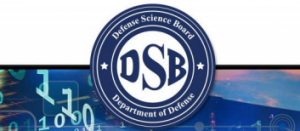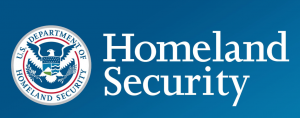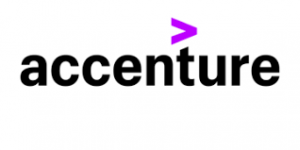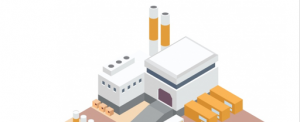SAFe for Government Resources
Hot Topics

Final report from the task force focused on the applicability of iterative software development for the DoD. The Task Force strongly believes greater adoption of continuous iterative development and its associated best practices will result in significantly improved acquisition performance. Read the full report for their findings and 7 specific recommendations for DoD software acquisitions.

The Section 809 Panel was established by Congress as part of the FY 2016 National Defense Authorization Act (NDAA) to identify ways to streamline and improve the defense acquisition system, to include adoption iterative continuous delivery process models. The final volume (of 3) was published in January 2019. The panel has made a total of 98 recommendations for modernizing defense acquisitions.

The Federal IT Acquisition Reform Act (FITARA) requires Federal CIOs to take a more active role in managing agency IT spending. However, CIOs often lack comprehensive visibility into how IT dollars are spent. Technology Business Management (TMB) is a framework designed to address that challenge, and is specifically cited as a priority for implementation in the President’s budget for 2019.

A growing number of government agencies are submitting formal case studies of their SAFe implementations for publication! Check out the case studies available now by clicking on the Government button on the case study page. Also check out the government section in the Short Stories list on the right side of the page!

The Defense Innovation Board in 2018 published an alternative set of metrics for Department of Defense software programs to use for driving improvements to cost, schedule, and performance. They provide a different approach from legacy metrics such as source lines of code (SLOC) for measuring the health of software development activities.
Important References

This is the foundational guidance for a user-centered, agile, and iterative approach to developing technology-based government services for U.S. citizens. It is written and maintained by U.S. Digital Service, the agency formed after the challenges with the Healthcare.gov launch to help government programs embrace modern development practices.

TechFAR Hub is the comprehensive source for resources and best practices for digital service and Agile acquisitions. The primary reference on the site is the TechFAR Handbook which includes a broad spectrum of questions and answers for acquisition professionals related to procurement and contracts involving an Agile process. The site also includes case studies, templates and sample contract language, and much more! This is a must-have resource for government acquisition professionals!

18F partners with federal agencies to help build better digital services and to implement new acquisition techniques. 18F was designed to attract talent from the private sector with experience in modern development technologies and practices to serve as an internal consulting service to help agencies solve their digital services challenges. There are several excellent resources on this site for supporting Agile adoption.

This revised version of the Digital Services Playbook was authored by members of the Silicon Valley team that helped rescue Healthcare.gov and author the original playbook. Now from their own company called Ad Hoc, these thought leaders share their key lessons learned from implementing the original playbook recommendations in several U.S. agencies.

This anonymized case study tells the story of an actual development project for a new software system undertaken by a key program within an executive department of the U.S. federal government. It documents the history and approaches used during the development of the new system and illustrates the successes and challenges of applying iterative, Agile, and Lean development methods in an organization that previously used more traditional development methods.

The Department of Homeland Security (DHS) has adopted an “Agile first” policy as the preferred method for technology development. This instruction manual provides great insight into practical guidance that DHS created for how to apply Agile across thousands of programs within the department. It provides an excellent template and exemplar for other agencies.

Accenture Federal Services (AFS) surveyed 200 federal government IT executives across both defense and civilian agencies to explore if IT is effectively serving the needs of the mission, and if IT is pivoting quickly enough to cloud, digital services, agile, DevOps, etc. to meet increased expectations and dynamic requirements. This report summarizes the results.
Agile and Acquisitions in Government

This site includes an excellent video that provides a basic foundation of knowledge for how to write government contracts that support and enable an Agile way of working by contractors on federal programs. In addition to the video, the site includes example templates for use by contracting officers to build Agile contracts.

The US Digital Service and the Office of Federal Procurement Policy (OFPP) partnered to develop a training and certification program for acquisition professionals to understand new techniques and templates for contracts that support Agile and digital services. The site also includes a comprehensive contact list for alumni who have completed the program across all federal agencies.

Jonathan Mostowski is a senior acquisition official at US Digital Service who has authored a series of video blogs on various topics related to Agile acquisitions in the U.S. government. Formerly at NGA, Jonathan is a recognized author and public speaker on how agencies can use the tools within and beyond the FAR to build contracts that support iterative development models. This is his personal YouTube channel, but the information he shares is practical and highly relevant to modern acquisitions.

In a 2017 the Federal Chief Acquisition Officer and the Federal CIO, in partnership with USDS, issued a memo establishing Agile development as a standard commercial product that can be acquired using the simplified procedures under FAR 13.5. This guideline applies to contracts of $7M or less, and is intended to access innovative companies that might be difficult to engage through typical contracts. Click on the link to read the full memo.

Other Transaction Authority (OTA) refers to the 10 U.S.C. 2371b authority for specific agencies (DoD, DoE, HHS, DHS, DoT, and NASA) to carry out a broad range of research and development activities using contracts that fall outside the governance of FAR/DFAR. Contracts can be valued up to $250M. This article provides a current perspective on the use of OTA contracts in 2019.

A commercial solutions opening (CSO) is an acquisition alternative authorized by Section 879 of the FY 17 NDAA that offers fast-track vendor selection timelines, simplified contract terms, and a preference for allowing the vendor to retain core intellectual property, when appropriate. It is not governed by the FAR. An example of a CSO posting can be found here.

myFAR is a fully interactive experience, allowing you to easily bookmark, take notes, and search for content in the FAR in an intuitive and elegant fashion. The site can be accessed offline or on your phone to access myFAR from anywhere. In addition to the exact FAR language, the tool provides expert analyses and protips for dealing with “the Regulations.” And if you have a question about a particular section, you can submit a question to a subject matter expert for some advice from the pros.

This template created by the GSA Alliant Shared Interest Group provides guidelines and considerations for building a SOW for acquiring Agile services.

This template provides contract language guidelines for development of a Performance Work Statement (PWS) under an Agile BPA.

This template provides contract language guidance for Task Order development under an Agile BPA.

As federal IT attempts to move toward a mature Agile and DevOps posture and culture, it is encountering challenges that are in many ways unique to the federal government. Many of these are not technology issues, but are associated with the acquisition process and contracting of IT services. This article presents a few of these challenges as well as some potential solutions that would more closely align acquisition with Agile and DevOps practices and principles.


